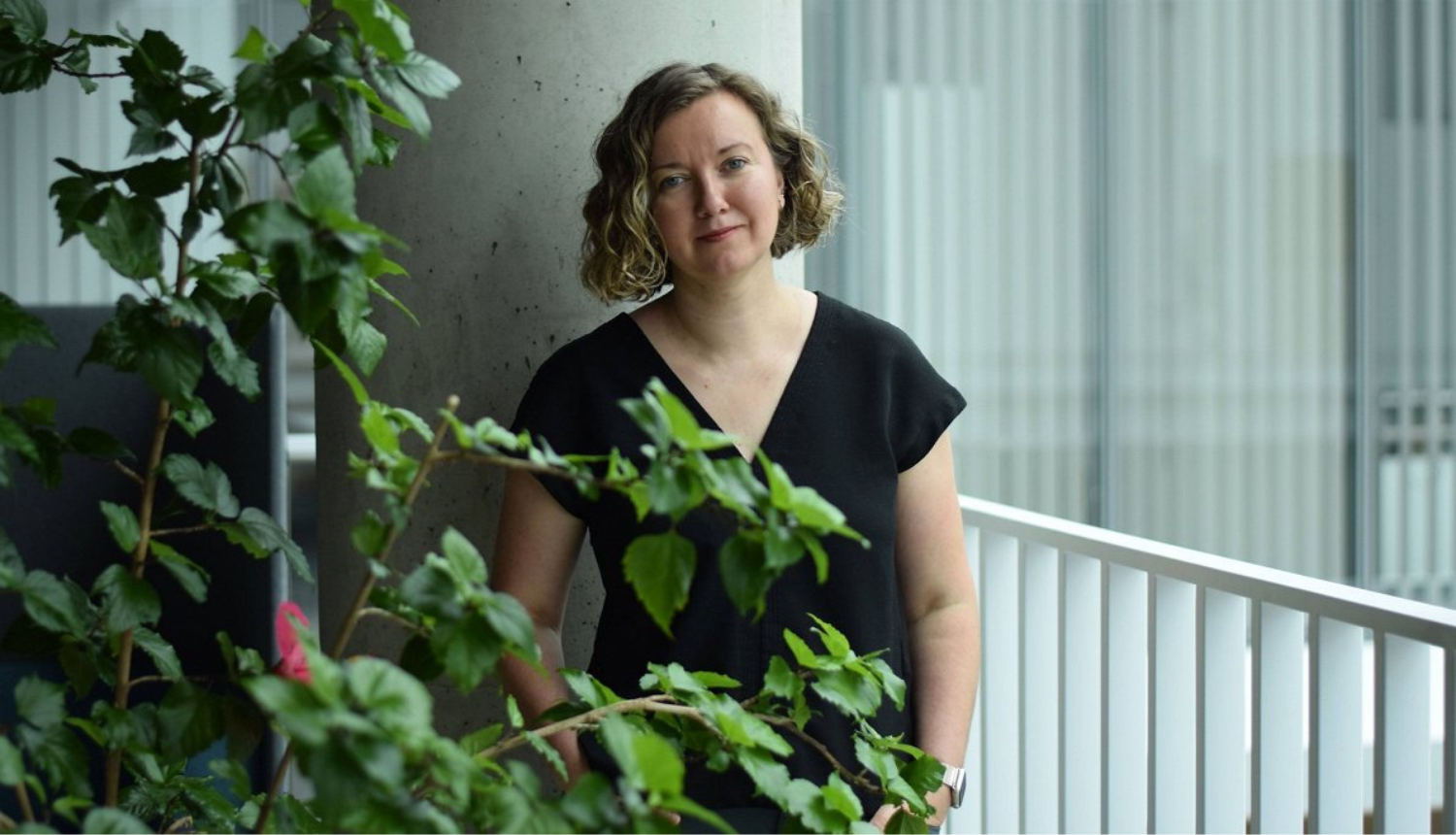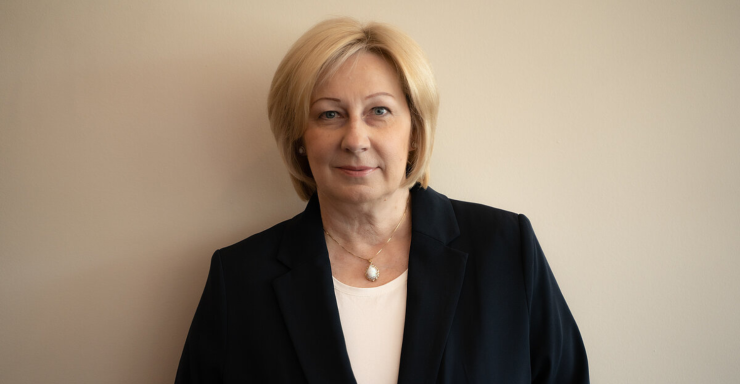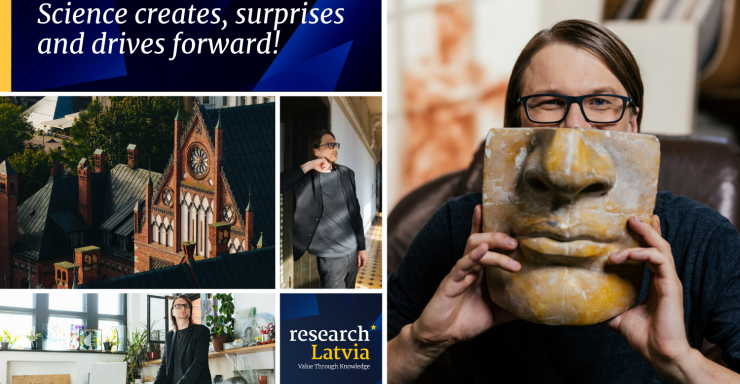In an interview, humanities researcher, University of Latvia (UL) associate tenured professor and writer Sanita Reinsone was called a story hunter. Her everyday life is closely connected with people's memoirs, diaries, and research into life writing traditions. The children's book "Friends and Neighbours" ("Draugi un kaimiņi" ,"Jāņa Rozes apgāds", 2024), which this year earned both the recognition of the experts of the Latvian Literature Annual Prize and the sympathy of the readers of the LSM portal in the recently held Jāņa Baltvilks Prize, is also a kind of memory fixation, and it ingeniously and wittily tells about friendship and the discovery of life stories in the nineties.
In an interview with the LSM.lv portal, she talks about writing, research, and the digital world, which already has the power to not only record these memories but also to create a diversely analysable repository of our individual and collective experience.
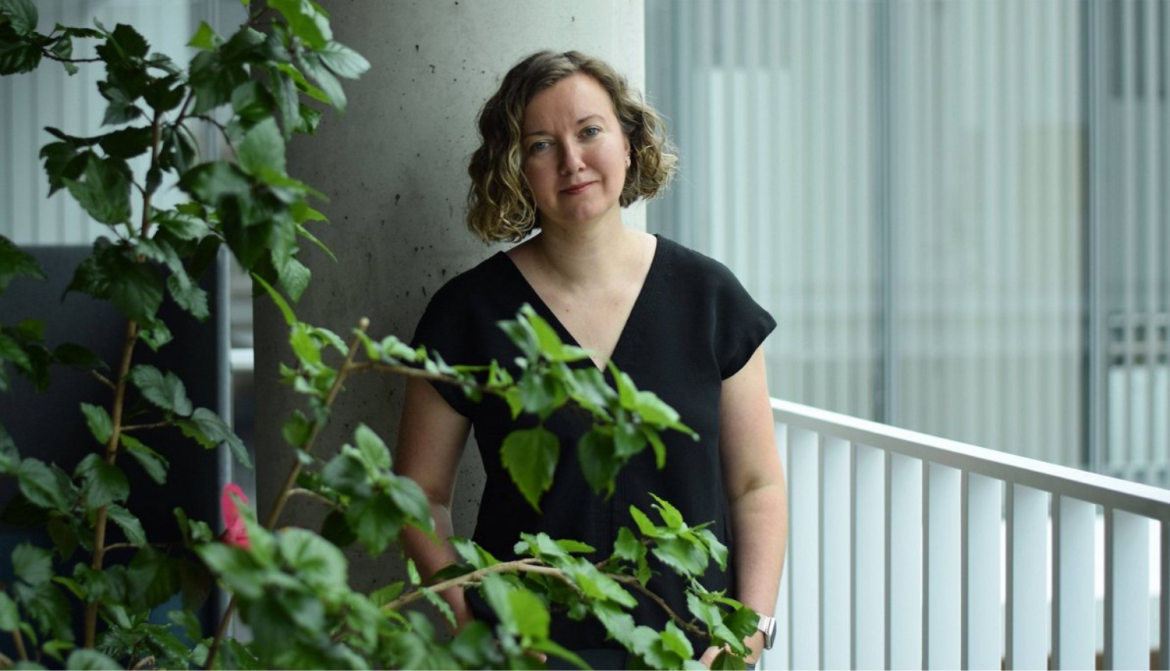
While searching for information about you and talking to people who know you well, I discovered so many interesting and surprising things. What I liked best was the phrase "story hunter" used in an interview to describe you. It sounds very romantic. But how much romance is there in research, and specifically in folklore research?
And what can be fascinating about it for a modern person? Folklore is very diverse. What students or people who are not particularly interested in folklore know are folk songs or tales that we find in textbooks. But folklore has so many layers, so much interesting content, something that comes from our ancient, ancient roots, and it is content that does not repeat itself. Yes, there are variants and variations of repetition, but overall, folklore is very diverse in terms of content and form.
For the last twenty years, I have worked at the Latvian Folklore Repository and led digitisation projects. As of this year, I am no longer there, but the projects continue. Digitising manuscripts, which are thousands and thousands of pages, revealed this wealth because we went through everything that people have said, told, and written down. These materials contain both folk knowledge, ideas, the art of words, and also the entire history of collecting folklore – who wrote it all, why he wrote it all down, who he went to, and who told him something. There is a whole ecosystem underneath these large folklore collections, and the volume that has been collected in Latvia is imposing.
But, of course, what appeals to and interests the researcher. I am most interested in stories, legends, tales, various stories of experience, and most of all those that are associated with a certain place or ideas about it. And then it is usually interesting to explore the layers of awareness of a place, the information that people have once told about this place. One example is our country house, which is located in Bilska – between Smilteni and Valka. A wonderful place, an old house, my husband's homeland, but I didn't know anything special about this place. I thought I'd look to see if there was anything to be found in folklore materials, and quickly, one tale, then another, dozens, hundreds, started coming. It turns out that in that area, which is the immediate vicinity of Smiltene, an enormous number of folk demonological tales have been written down. It is a very "dark" place. And immediately, the idea of the place, its meaning, changes; I saw it with completely different eyes. By collecting all this information and putting it on a map, it almost creates another dimension, an invisible and also unknown or well-forgotten landscape. Folklore is not marginal; it interests many people.
At the Latvian Folklore Repository, we have been organising manuscript rewriting campaigns for more than ten years, and we have experienced how many people discover what interests them in folklore in this way - by rewriting, slowly reading, "travelling" through manuscripts to their native places, looking for their ancestors. You can find interesting things in folklore.
It is like a parallel world that is happening right next to us, but which we most often have no idea about – that we have so much information about places, roads, mountains and hills, lindens and oaks that we don't know.
Yes, it is. Of course, not all places have been so lucky, and this has largely depended on local folklore collectors and their enthusiasm. But I think that there are still many discoveries ahead of us.
How did it happen that folklore fascinated you so much? How do you remember that moment, that feeling?
I guess I don't remember. I had an idea when I went to study philology – these are books, and I like books, that's fine, but I probably didn't see myself as a researcher of texts. The most exciting thing about folklore research was going to people, these live conversations. We had many expeditions, including individual expeditions. For example, I conducted research on getting lost, on perceptions of getting lost, and as part of it, I went to different places in Latvia and interviewed people. That was exactly what drew me in so much – these lively conversations here, encounters with people and their life stories, experiences, and perceptions.
Vai var tā apgalvot, ka tiešām katrs cilvēks par sevi varētu uzrakstīt grāmatu?
No! (Laughs.)
Better, no?
No, because it's about writing, and it's not that easy. In 2018, I initiated the creation of a collection of Autobiographies at the Latvian Folklore Repository, inviting people to submit or digitally deposit written life stories, memories, and diaries. It received a great response from the public. We have a very nice and active team, and we also really popularise writing about life, but, yes, it's not an easy thing. We're better at talking, but once there's a page on the computer or in front of you on the table, it's not that easy to write about your life.
What is the complexity? The artistic side? Maybe the fear of your thoughts?
Probably the most important feeling is that my life is worth writing about? I always say that every life is worth writing about. One thing is that we are each a personality, but we are also representatives of the era, and not a single detail that you write down in your life story is in vain. We look forward a hundred years, and all the details, everything is important – your views, emotions, fears. It all becomes ethnographic and important, and we see this in diaries written a hundred years ago or more. Everything seems so interesting there, even the simplest details.
In 2018, we started publishing the diary of Emīls Pūdels (1893–1969) on social networks – every day, exactly what he wrote a hundred years ago. Emīls Pudelis was a farmer in the Mazsalaca area, where I come from, and his diary is like " Twitter " entries - very short. It was a very convenient format for us, and in 2018 we started publishing it on " Facebook " and " Twitter ", we continue to do so, and it has many followers. Emīls Pudelis does farm work, sometimes has fun, and we have been following his life for years - then he has a girl, then he gets married, now - a hundred years ago - a son was born, but all the time there are these farm works, the rhythm of rural life, and it seems interesting. .
What are the oldest and most recent such memories that have come to you?
It is currently a collective work, which is kept in the Latvian Folklore Repository of the Institute of Literature, Folklore and Art of the University of Latvia. However, I also continue to work on behalf of the Faculty of Humanities of the University of Latvia. If I'm not mistaken, one of the oldest is the diary of a German girl, which I started writing in 1926. But in fact, this collection began with very unique material, which I also published in a book called "Adam's Story". That was the first impetus, but after the publication of "Adam's Story", people started bringing me other materials. As a private person, I couldn't keep them, so we created a collection. The author of the autobiography, Ādams Purmalis (1847 – 1917), was born in the middle of the nineteenth century, wrote around the turn of the century, but in principle, it is a fascinating life story of a person who lived in the nineteenth century, rich in ethnographic and everyday details.
The most recent is the Pandemic Diaries. We had a project on pandemic diaries, in which more than 230 authors participated. It is a unique collection, which is, first of all, very rich on an international scale and is also being used vigorously in research.
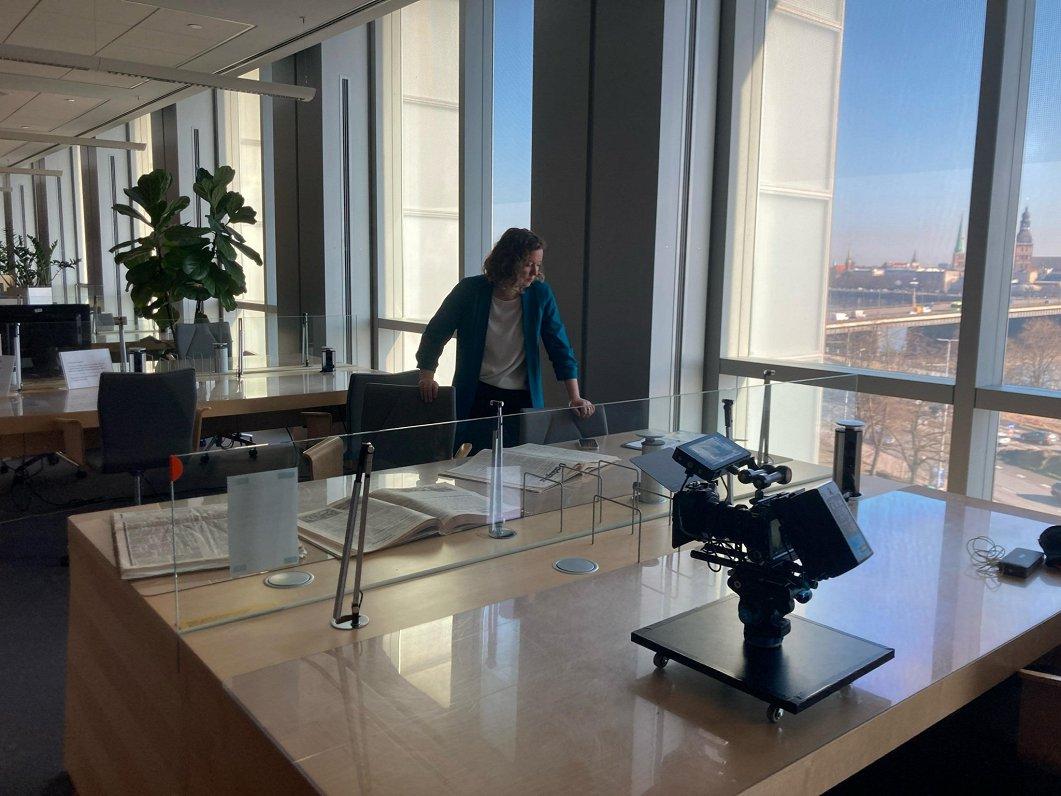
How much do we differ as people? The differences are certainly purely everyday, but how much does it differ in the way we think and feel?
That's a bit of a provocative question. (Laughs.) But overall, judging by what is written in diaries, we are not very different - the worries, anxieties, and what we entrust to diaries, it's all quite similar. We are currently researching this. The collection and preservation of stories is one thing, and then there is another thing that resonates with digital humanities. We are creating corpora of texts here and there, where our team can select, for example, the diaries of young people through the centuries, and then, when this material is more complete, we will be able to draw scientifically based conclusions. But when reading, getting acquainted with the material, yes, the language is different, the way of expression may be different, but overall, there have been no huge changes over the century. It's interesting, also when thinking about the future. We are getting closer and closer to artificial intelligence.
It's interesting, also when thinking about the future. We are getting closer and closer to artificial intelligence. How involved are you in all this? I know that you once worked in the Artificial Intelligence Laboratory of the Institute of Mathematics and Informatics of the University of Latvia. I read about it and wondered how it all goes together!
This technical, computer side of mine is quite strong, but it comes from childhood, because my father was a teacher of both physics and computer science, and the very first computers were a part of our everyday life – going to my dad's work and making something there. I think that the decision about which direction to go in – humanitarian or exact – happened in high school. I started studying in high school in the humanitarian class in Cēsis, at the Friendly Call Cēsis State Gymnasium, and I think that after that, that direction stabilised. But I was lucky, because in my first year, there was an offer for students to get involved in the digitisation of Latvian literature at the Artificial Intelligence Laboratory. I went there and worked with such technical, digital things for quite a long time, and then I continued it at the Institute of Literature, Folklore and Art of the University of Latvia, where I also headed the Digital Humanities Group. Yes, I like both sides. I also like how they connect and what comes of it, but I feel most at home on the creative, humanitarian side.
I cannot distance myself from artificial intelligence. I follow what is happening with interest. I am not panicking. Artificial intelligence changes many things, but the Internet also changed a lot at one time. There are moments when technologies come in, and it seems to us that everything is changing. We wonder how we will live in the future, and artificial intelligence will write books for us. That initial effect – euphoria for some, opposite emotions for others, but I think that over time we will learn to adapt, organise ourselves and use it meaningfully, to throw away the husk side that comes with it.
About digital humanities. What is currently happening in this field in Latvia? How developed and serious is it currently in Latvia?
I think that it is a direction that is developing very rapidly. In a week, the seventh Baltic Digital Humanities Summer School will begin, with many participants and even more applicants than we can accommodate. It is being created in cooperation between the University of Latvia, the Institute of Literature, Folklore and Art of the University of Latvia and the National Library of Latvia. It seems to me that there is a fairly active digital humanities community in Latvia. I must return to the fact that we are tiny compared to, for example, Germany or Poland. However, we have a very active community, and we are well aware of each other's research and institutional activities, and we also do many things together. An open digital research infrastructure is also being formed – databases, corpora, which can be used not only by the person who creates them, but by anyone who needs them.
The good news is that digital humanities are also beginning to become established in studies. Of course, not all humanities students need to specialise in this direction, but they need to be aware of the opportunities provided by digital methods and that they can be a good tool in research. They can help process information faster, create maps and visualisations of collected materials, see something unnoticed, and so on. Master's theses and dissertations are being developed in this direction, and I think that this direction is developing well, but, of course, with the rapid development of technology and artificial intelligence, the picture is becoming more diverse, more dynamic, and at the same time, more opportunities are appearing. For example, language technology study modules are offered in both the computer science and humanities programs of the University of Latvia. There are, of course, its problems, as in all directions, but in general, digital humanities are becoming increasingly visible, and we see that young people are very interested in them.
The good news is that it can also be studied later. Most often, it is the master's stage, when more thorough knowledge has already been acquired in one field or another, and then you can move on. Many cultural professionals come to the summer school and study certain topics there. This year, for example, our topic is digital methods in historical research, which means that everything that can be useful in working with historical materials will be here, useful not only for researchers. For example, in handwriting recognition with artificial intelligence applications, there will be a special workshop on map creation.
It sounds like these paths are endless and that we may not even realise where they can all lead. Moreover, this is what could attract young researchers.
Yes, exactly! And many work primarily with qualitative methods; they do not aim to be the top expert in digital humanities. Rather, we try to create an environment for interdisciplinary teams to form, where an expert in computational methods collaborates with a humanities researcher. Interdisciplinary collaboration in digital humanities is essential.
es, and somewhere in between the work and research, the book "Friends and Neighbours" was also written - a book that offers modern children an experience that they can no longer have today. We protect our children so much, we don't take our eyes off them, and here is a fantastic book about children who go to visit strangers and learn their stories.
Yes, it has changed, but maybe not in small towns. I remember my childhood in Mazsalaca very well; we knew every neighbour there. But despite that - entering a strange house, from a child's perspective, was an adventure, a whole world.
How did this book come about? Is it a story of experience? Or maybe several small stories collected?
It's very hard to say! In general, I wrote the main part quite a long time ago, and then I marinated it for a long time. This is not my job; this is my hobby, so I don't have deadlines. It seems like I started writing something right after the first book was published. From about 2017 to 2021, I wrote it slowly and polished the characters.
I can't come up with anything. I can't come up with the environment, it's just taken from somewhere, combined, glued together from what I've known and experienced.
The same goes for people - almost all of these characters have prototypes. Not exactly and 100% - the body is taken from someone, something else from someone else, but they're all like that. I can't say that it's a very autobiographical text. There are some features there, and my neighbours and friends can probably recognise something there. But basically, these are observations based on life, people I've met, heard stories about and who were very vivid. The parrot is real too. (Laughs.) He was and lived in Torņakalns.
Has anyone recognised themselves?
I have given it to read and told them about it. I have also given the book to your prototype to read, so that nothing uncomfortable appears, because various details of life could be real. I have given the book to the prototypes to read and said, "Look, this is from you." But, of course, there is much fantasy in it in the sense that it is very embellished and stylised, so that the characters and events are so seamless.
The most mystical character in the book is an assistant professor, with whom I worked in research, and his prototype is Dags Trotzig (Dag Trotzig , 1914–1944), who came to Latvia from Sweden when he was very young in 1938 and worked at the University of Latvia as a lecturer in ethnology. He is a very mysterious personality. He also had connections with the Swedish intelligence service. Together with my Swedish colleague Fredrik Scott, we are still searching for materials in the Swedish archives that he may have sent from Latvia. He experienced the 1940 occupation here and immediately left for Sweden. I have access to his diaries, letters and various descriptions. He died very young – in 1944 at the age of 29. I had the desire to bring him to life in a book and create a kind of conspiracy theory that he is still living somewhere in a small Latvian town, in a mysterious house. "Friends and Neighbours" plays with a cat – Dags Trocigs did indeed publish a scientific article about a cat in 1940, so the story includes some quotes and sentences from this scientific work.
Recently, my daughter also experienced a real "Friends and Neighbors"-era summer event – a head injury, stitches…
Scraped knees, head injuries in the summer – yes, it was probably some kind of life lesson. Sometimes we scratch our heads and wonder what we didn't do in our childhood, and our parents didn't know anything about it. In general, the nineties speak to me a lot, it's what I want to reflect on, and I haven't finished this stage yet. I'm currently writing a sequel to "Friends and Neighbors".
Both main characters in the book are growing up, and other problems are starting to appear, but they will also have their first foreign experience. A foreign teacher will come to the school – from Norway – from the small town of Gūla , which is located in the beautiful Hallingdal valley. So one or both of the characters will have the opportunity to go to Norway, be outside their usual environment, and get to know another culture. The story will be about skiing, a bit about overcoming oneself and the first time abroad, which for many of us who grew up in the 90s was a life-transforming experience. And Gūlu – a mythical, story-filled Norwegian town.
So we have something to look forward to, but you said you didn't have a deadline so that it won't be that soon.
I don't have a deadline, but I want to finish it because I already have my next job in mind, and I can't work in parallel because I have much writing to do, including research. It's always an attempt to find time to write between work duties, because everything is intellectually intense. So I dedicated this vacation to writing and studying the Norwegian children's ski culture.
es, the wild nineties – that's my childhood too. But how much do today's children understand? What feedback have you heard about "Friends and Neighbors" from young readers?
My children are the ones I test what I write on. I read everything out loud, including now, when I'm preparing for the Baltvilkas Prize readings, and I read to my youngest son, who is already twelve years old, and that's a long time. But he lets me read to him, and then I watch the moments when he laughs and when he gets bored. Yes, at home we have discussed quite a lot about those nineties and earlier times. I am amused by children's ideas, which sound something like this - you didn't have the Internet? And what about electricity? It's all in one mess, as if we had some kind of past time, when there was no Internet, mobile phones, electricity, and what did you eat at all! (Laughs.) I think that the background nuances from that time that are included in the book are a good clue for parents to use to develop their story and their experience further.
The book has also had outstanding success – it has received the Latvian Literature of the Year Award, and recently the LSM Readers' Choice Award at the Baltvilka Award. How many hopes and expectations did you have to receive such recognition?
In general, it was a huge surprise for me. Usually, work is completed so that there are both achievements and successes, but this is my hobby, so I was surprised to receive both awards. Also about the LSM Readers' Award, and both of these awards are very highly regarded. It is such a huge, white joy, because it was unexpected!
For me, writing is a completely joyful occupation; there is nothing hard or complicated about it, and I also find working with artists and publishing houses nice and gratifying.

Tell me more about the tenured professorship. I understand that it is a big, serious achievement, because there are not many such professors in Latvia.
Yes, it is a new career model with an international competition, and, of course, it is challenging. I have heard a tenured professorship called the zenith of an academic career. However, when I am asked to present myself in a professional setting outside the academic environment, I simply say "associate professor". It is more understandable that way. Basically, in Latvian science, most researchers work on projects, which means that the remuneration of researchers largely depends on success in project competitions. For university lecturers who work with students, the situation might be slightly different, but part of their remuneration is also formed from attracting project funding. Consequently, this work rhythm is quite cruel and unpredictable. With a tenured professorship, an attempt is made to approach a more internationally understandable academic career model and to ensure greater stability. But most of all, a tenured professor is a messenger of the relevant field of science, and he must be internationally visible, attract projects, young researchers, doctoral students and generally develop his field.
I am an associate tenured professor in digital humanities at the Faculty of Humanities of the University of Latvia. I have only been working here for a little over six months. In February, we established the Digital Humanities Centre, where we are actively working in this field, organising the aforementioned summer school, collaborating with other digital humanities centres abroad, and launching new research.
Do you ever doubt what you are doing and teaching? Do professors seriously suffer from the so-called imposter syndrome?
I think that every person has such thoughts to a greater or lesser extent. I have had this feeling since my doctoral studies – the older I get, the less I know. And, of course, the volume and circulation of knowledge is becoming more and more intense. I couldn't say that I have a huge sense of self-confidence. Rather, on the contrary, a constant critical look at myself and what I can offer. I also think about the point at which I might have to stop, because I won't be able to keep up anymore. Everything is developing very intensively, and the demands in science are also becoming higher and higher. I feel perfect there at the moment and I work quite successfully, but the short answer is – of course, there is such a plague, but it is probably part of the process and maybe also of life.
It is probably always worth keeping in mind that there is still a lot to learn and research.
Yes, of course, and, being in an environment of researchers and professors, you can see – it is not like a person can reach some absolute ceiling. There are always possible different turning points and growth opportunities, and knowledge never ends.
Which is the path that you would still like to explore and learn?
Ah, many paths and roads! For me, perhaps the specificity is that I work in quite a few directions, and often in research, the direction that manages to attract funding develops, while the others are a bit dormant. Let's see! But, yes, research into autobiographies, personal diaries, the tradition of writing down one's life – that's what interests me, but this is also the direction my group should go in, because it is also a unique corpus of texts and research direction on an international scale.
Social networks could be a modern version of diaries for writing down emotions. Most likely, this will be a field for future digital researchers.
Yes, but it is quite challenging, because the paper is so fixed, it allows you to agree with the author and agree on what can be done with it. The text on social media is very fluid; there are comments, and someone has shared the text. It is essentially unarchivable. We experimented with this a little in the Pandemic Diaries, when we invited people to tag a collection in their social media posts, thus confirming that the author is happy for it to be archived. It was a big burden for us, and we later realised and analysed it in our research articles – even if we archive these posts to save them for the future, it is only a part of this text, because we don't see smileys, times and other reactions, we don't see what's happening in the comments. But in general, of course, the way of self-reflection is changing, the environment is changing, and right now, the most natural way for people is to write something on social networks quickly.
How do professors relax? I understand that we are meeting on the last day of your vacation. How did you relax?
In general, I have tried to regulate it a lot over the past year, because otherwise, I like everything, everything is exciting, but in the end, you have to understand that there is nothing else but work. Right now, I am trying to relax, and summer, of course, is a wonderful time. We have a country house where there is nothing superfluous, where you can take a breather. I scrape paint off old furniture. I can do it for hours, I like it, and then I also try not to think about work matters. Right now I have this new writing period, so I live in the worlds of my stories, also scraping paint, going to the sea to swim and travelling with my family.
And what about reading? Do I get to read too?
When writing, I even avoid reading other people's works, because I need to keep my story's world clean. But in general, I get to read a lot, but not fiction. I have to read quite a lot of scientific articles - master's and doctoral students' works, or articles by other researchers. That's why I get to read fiction relatively little or mostly when I have to review something, if there is such a need. Because everyday life is such a constant reading, and in those moments when I want to relax, of course, I choose not to read, but to do something with my hands and feet. We have many books at home, because my husband is a huge reader. I am informed, and I also read this and that sometimes.
